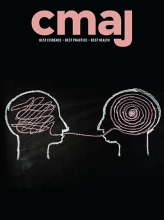We thank Dr. Giles1 for her interest and commentary on our article.2
For clarification, Drs. Sholzberg, Teitel and Hicks are hematologists, and Dr. Sholzberg is the medical director of the coagulation laboratory at St. Michael’s Hospital. In addition, Drs. Sholzberg and Teitel co-direct the largest hemophilia treatment centre in Canada. Therefore, although we do not face the challenges of medicine in a rural setting, our experience with the population of patients with bleeding disorders from a clinical and laboratory perspective is extensive.
We agree that working in a rural setting can pose a barrier to access of rapid turnaround and reliable results for coagulation studies. Unfortunately, the issue of reliability and accuracy for von Willebrand factor–related testing is not an issue of the past — it remains a critical issue that results in false-positive diagnoses of von Willebrand disease, because samples need to travel long distances to regional reference laboratories to be assayed, and von Willebrand factor is particularly sensitive to maintenance of temperature during transit.3,4 Testing of platelet function is not even possible by sending samples to a reference laboratory, because fresh blood has to be tested within four hours of collection and carefully transported, requiring patients to be tested at a specialized centre with a reference laboratory.
That being said, we recognize that referral of a patient to a specialized centre for testing and consultation may not be feasible. This is why our article outlined that many physicians specializing in bleeding disorders are available for consultation via teleconference or email.
Furthermore, the primary objective of our article was to enhance awareness of bleeding questionnaires among primary care physicians to limit unnecessary referrals and testing, given the high negative predictive value associated with a negative score on a bleeding questionnaire. We hope that our response has provided some clarification.
Footnotes
Competing interests: None declared











